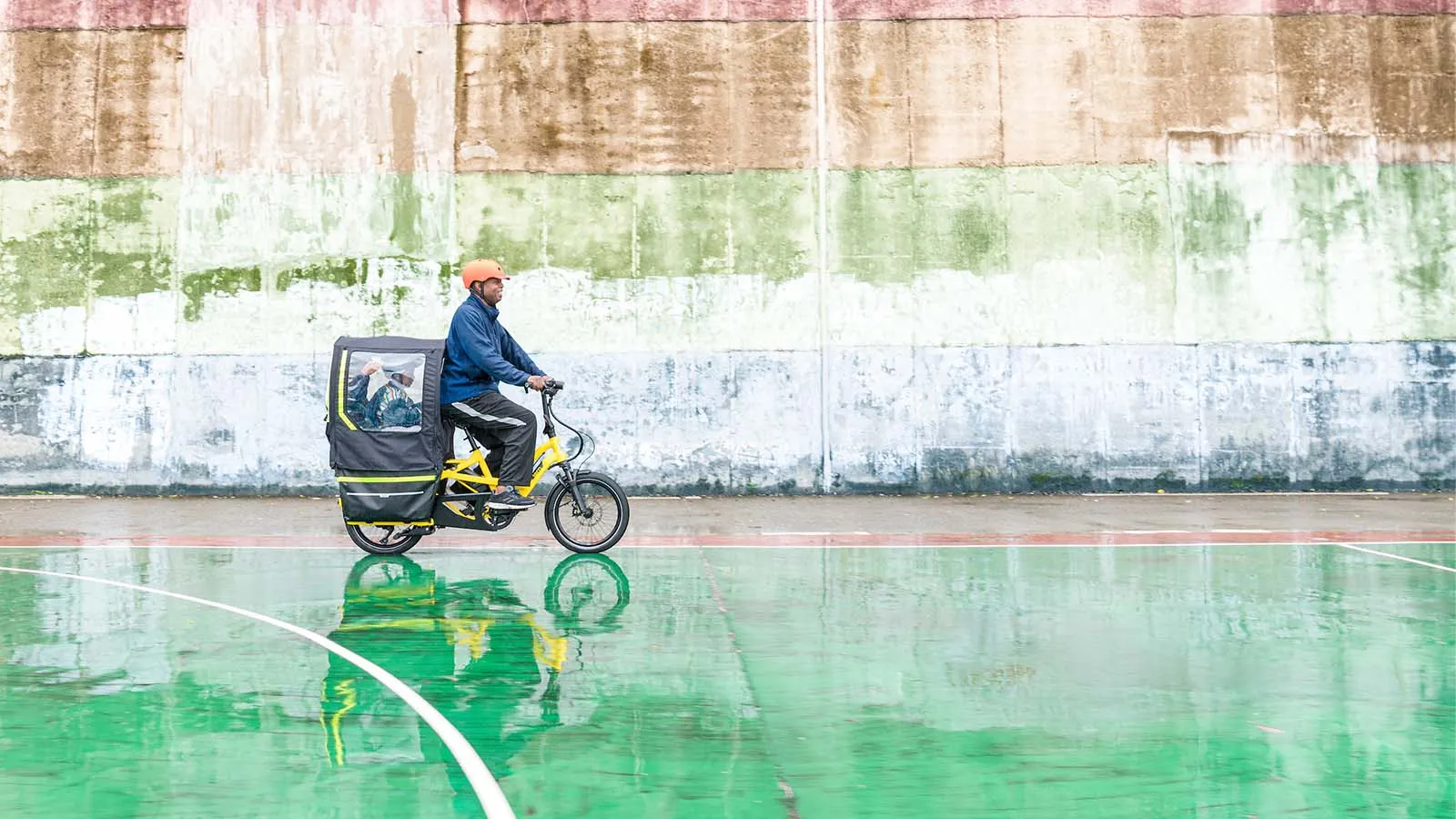
Do you live somewhere where winter means lots and lots of rain?
If so, you may be wondering how all that precipitation will affect your riding habits.
Although rain can be intimidating for some, it doesn't have to stop you from riding. Armed with the right information, you can keep cycling right through the cold, rainy winter months.
We asked Steve Gluckman, a member of our Product Development Team, for his best tips on rainy winter riding. Steve lives in Seattle and has had more than his fair share of experience with cycling in wet conditions. Here's what he had to say.
Special Bike Maintenance Considerations
1. Wipe your bike down regularly
Water, oil, and other substances from the road can leave a gross residue on your bike frame and components. Wipe your bike down periodically to prevent the residue from building up and affecting your ride.
2. Pay special attention to your chain
Your chain will get dirty quickly in the rain. Give it a little extra love by using a degreaser to remove excess grime and applying a few drops of lubricant. This can greatly extend your chain's lifespan.
3. Check your brake pads
Modern disc brakes are awesome because they offer more consistent all-weather braking performance compared to their rim-brake cousins. So Tern bikes with hydraulic disc brakes need even less attention in wet weather than cable-actuated brake systems.
That being said, disc brake pads definitely wear out—especially in hilly and/or wet climates—so they need to be checked frequently. It's not a bad idea to check for signs of wear weekly during a rainy winter.
Eventually, brake rotors will wear down and hydraulic systems will need to be flushed—but that's more of an annual maintenance thing.
4. Keep tires free from debris
Rain washes all sorts of debris into the roadway. Wet tires tend to pick up small detritus (such as shards of broken glass and so forth) that eventually can work their way through the tires and puncture the inner tube.
Many Tern bikes have super heavy-duty tires that feature additional puncture barriers, but even the best tire can be foiled by rainy debris. Inspecting tires regularly is a good idea even in ideal conditions—and especially when it gets wet and nasty outside.
If you find any debris in your tires, use a small dental pick or another pointy object to remove these embedded items before they puncture the tube.
5. Watch out for salt and cold
Depending on where you live, extreme cold can also affect your bike indirectly. In Seattle, the streets are not salted when it gets cold. But in many parts of the US where it gets extremely cold, salt and/or sand are used on the roads frequently. This wears out parts even more quickly. If you live in an area where cold means salt or sand, be even more vigilant about cleaning and maintenance.
If you have an e-bike, there are additional things to watch out for. As far as electrical systems go, extreme cold is the real enemy of the battery. Wet weather itself shouldn't pose a problem. Just be aware that if temperatures plummet, you may experience decreased battery range—and you'll definitely want to bring the battery inside when not in use.
What to Wear
6. Make yourself extra visible
Motorist visibility gets worse in wet weather. Make yourself (even more) visible to drivers if possible.
7. Find the right comfort clothing
Scandinavians have a saying: "There's no such thing as bad weather, only bad clothing (gear!)." With a few choice pieces of apparel, cycling in the rain can actually be very pleasant—especially as you pass all the other travelers stuck in traffic!
You'll need to experiment to find out what works for you, but our number one recommendation is a good cap with a brim under the helmet, to keep the rain off of your face. Without this, your visibility will be impaired (especially if you wear glasses—imagine your car windshield without the wipers).
Other must-haves include a waterproof, breathable jacket and pants, and neoprene shoe covers to keep your feet warm and dry. You may also want to invest in waterproof panniers for stashing your gear.

Adjust Your Riding Style
8. Ride slow
Don't rush! Budget extra time to allow for the safest possible ride.
9. Reduce your tire pressure
This will slow you down a little, but will provide a much better grip.
10. Watch out for slippery spots
Always keep in mind that any section of the rode may be slicker than you anticipate.
That being said, keep an eye out for known danger zones like metal sewer covers in the middle of the road, metal grates along the curbs, and painted stripes at intersections. These can all become very slippery in the rain and cause a crash before you can react.
And last but not least:
11. Enjoy being out there!
It's not always easy to get started when it's already raining, but after the first few pedal revs, all the anxiety disappears! Be safe and ride on.
Related Articles
More info is coming